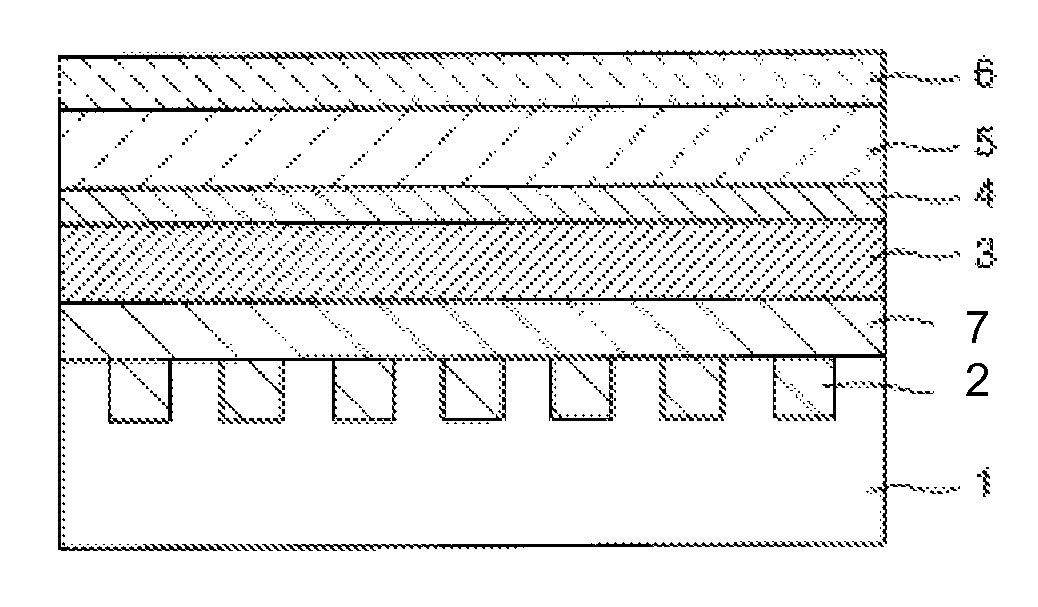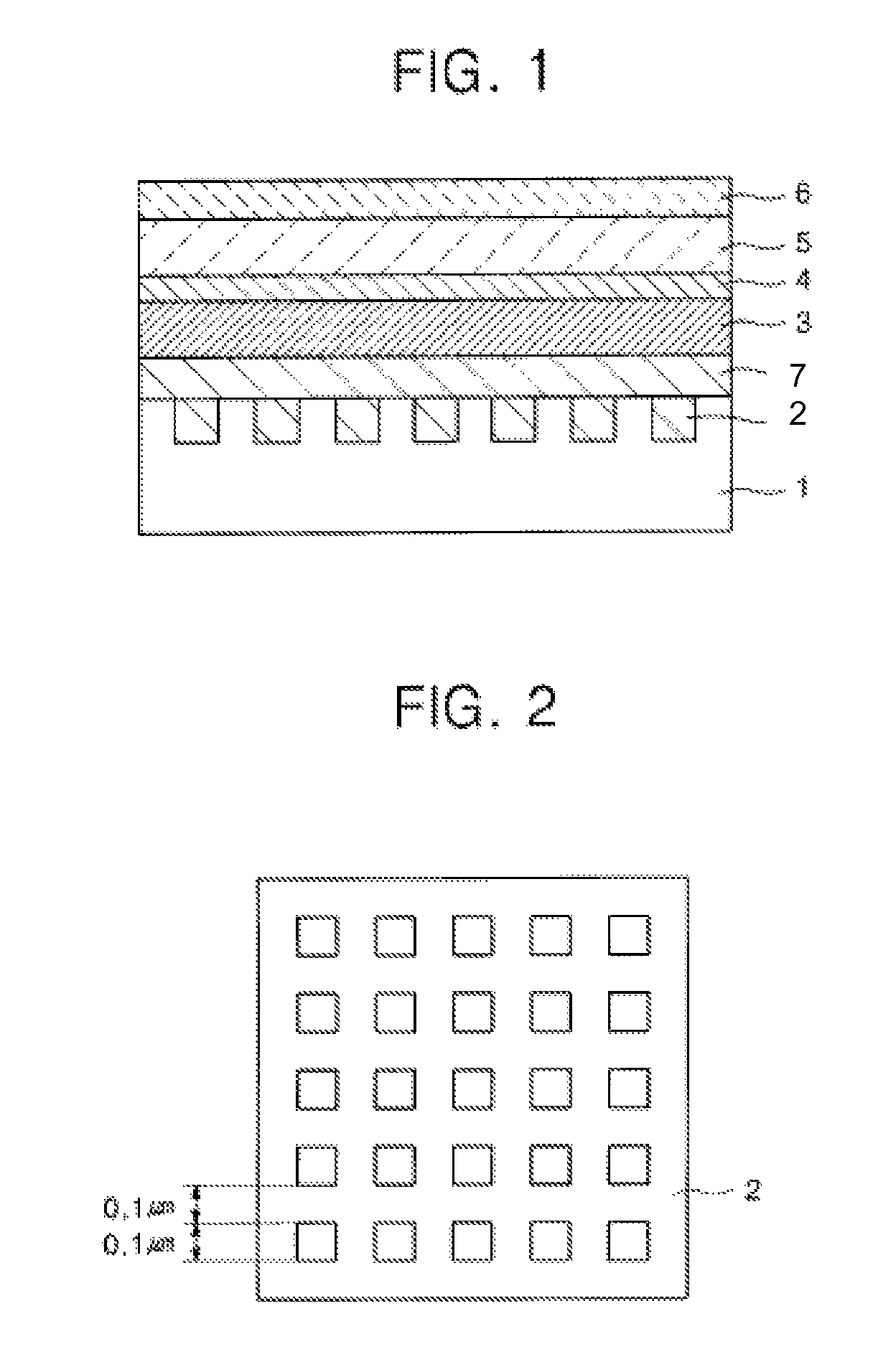Electroluminescent display device
a display device and electroluminescent technology, applied in the direction of discharge tube luminescnet screen, discharge tube/lamp details, incadescent envelope/vessel, etc., can solve the problem of fatal degradation of the organic el device, the lens cannot have a light focusing capability, and it is difficult to manufacture lenses with a side surface reflecting surface, etc., to achieve good luminescence property, high luminous efficiency, and stable manufacturing
- Summary
- Abstract
- Description
- Claims
- Application Information
AI Technical Summary
Benefits of technology
Problems solved by technology
Method used
Image
Examples
embodiment 1
[0049]The structure of Embodiment 1 is shown in FIG. 1. A diffraction grating 2 shown in FIG. 2 was made on a glass substrate of 50 mm×50 mm (NA45 by HOYA, 1.1 mm thick). First, an i-ray resist (THMR-iP1700 by TOKYO OHKA KOGYO CO.) was formed in a thickness of 2 μm on the glass substrate 1 by a spin coating method, and a pattern was formed with a width of 0.1 μm and a space of 0.1 μm using an i-ray stepper. Subsequently, the substrate 1 having the pattern formed therein was immersed in hydrofluoric acid solution and a groove having a depth of 100 nm was formed, and thereafter the remaining resist was eliminated by a dedicated stripper liquid to thus obtain a diffraction grating 2. Subsequently, a Si3N4 film 7 was formed with a thickness of 300 nm by a sputtering method using silicon nitride (Si3N4) as a target. Further, a silicon oxide (SiO2) layer as an intermediate layer 3 was formed in a thickness of 50 nm on the Si3N4 film 7 by the sputtering method, and then an anode 4, an orga...
embodiment 2
[0052]Embodiment 2 is the same as Embodiment 1 except that, in the structure and fabricating process, only the pitch of the diffraction grating 2 was changed to a width of 0.05 μm, a space of 0.05 μm, and a depth of 100 nm.
embodiment 3
[0053]Embodiment 3 is the same as Embodiment 1 except that, in the structure and fabricating process, a glass substrate (NA45 by HOYA, 1.1 mm thick) of 50 mm×50 mm was immersed in standard hydrofluoric acid liquid and the substrate surface was made to be coarse to form a scattering portion.
[0054]Subsequently, this scattering portion was buried, the intermediate layer 3 was formed, and the organic EL layer 5 was formed in the same condition as in Embodiment 1 to fabricate the organic EL device.
PUM
 Login to View More
Login to View More Abstract
Description
Claims
Application Information
 Login to View More
Login to View More - R&D
- Intellectual Property
- Life Sciences
- Materials
- Tech Scout
- Unparalleled Data Quality
- Higher Quality Content
- 60% Fewer Hallucinations
Browse by: Latest US Patents, China's latest patents, Technical Efficacy Thesaurus, Application Domain, Technology Topic, Popular Technical Reports.
© 2025 PatSnap. All rights reserved.Legal|Privacy policy|Modern Slavery Act Transparency Statement|Sitemap|About US| Contact US: help@patsnap.com



